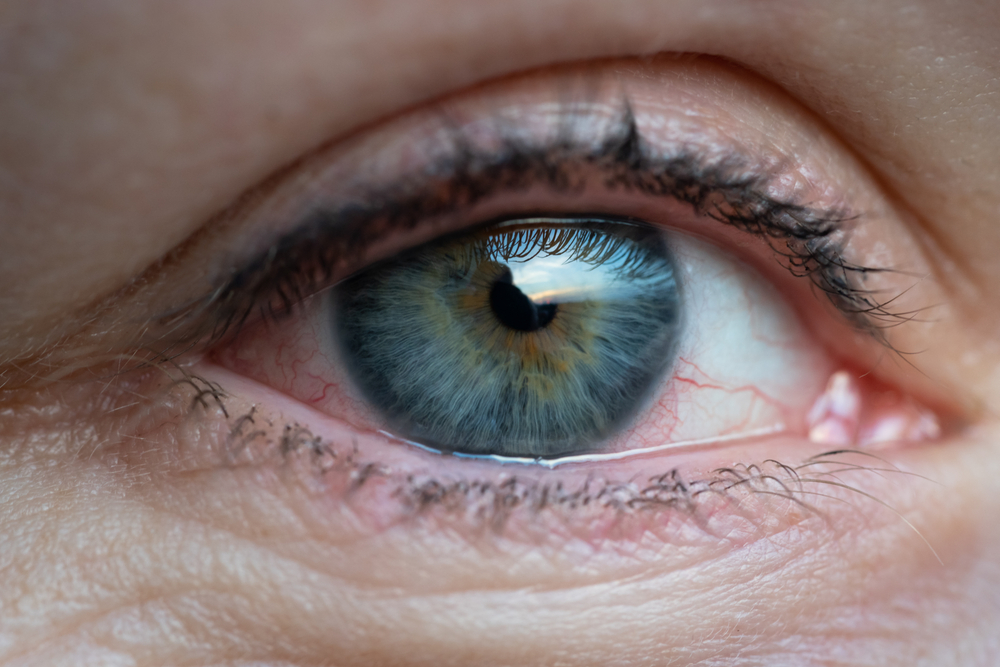
Dry eye syndrome is a chronic condition characterized by insufficient tear production or an imbalance in the tear film composition. This tear film is essential for maintaining the health and lubrication of your eyes, protecting them from irritants and preventing evaporative dryness. When this delicate balance is disrupted, it can lead to a variety of uncomfortable symptoms and potential long-term complications.
Causes of Dry Eye Syndrome
One of the primary causes of dry eye syndrome is Meibomian Gland Dysfunction (MGD). The Meibomian glands, located in the eyelids, produce an oily substance called meibum, which is a crucial component of the tear film. MGD occurs when these glands become blocked or dysfunctional, leading to an insufficient or abnormal meibum production. This disrupts the tear film's stability, causing rapid evaporation and dryness on the eye's surface.
Blepharitis, an inflammation of the eyelids, is another significant contributor to dry eye syndrome. This condition can be caused by various factors, including bacterial infections, allergies, or an overgrowth of skin flora. When the eyelids are inflamed, the Meibomian glands may become obstructed, leading to a disruption in the tear film and subsequent dryness.
While MGD and blepharitis are the primary causes, several other factors can contribute to the development or exacerbation of dry eye syndrome:
- Age: As you grow older, your tear production naturally decreases, making you more susceptible to dry eye syndrome.
- Hormonal Changes: Fluctuations in hormones, particularly during menopause or pregnancy, can impact tear production and quality.
- Environmental Factors: Exposure to dry air, wind, or smoke can accelerate tear evaporation and exacerbate dry eye symptoms.
- Medications: Certain medications, such as antihistamines, decongestants, and antidepressants, can reduce tear production as a side effect.
- Medical Conditions: Autoimmune disorders like Sjögren's syndrome, thyroid disorders, and diabetes can contribute to dry eye syndrome.
- Digital Screen Usage: Prolonged exposure to digital screens can lead to reduced blink rates and increased tear evaporation, exacerbating dry eye symptoms.
Common Symptoms of Dry Eye Syndrome
The symptoms of dry eye syndrome can vary in severity and may include:
- Eye Discomfort: You may experience a persistent, uncomfortable sensation of dryness, grittiness, or burning in your eyes.
- Redness and Irritation: Dry eyes can cause redness, inflammation, and irritation, leading to a feeling of scratchiness or a foreign body sensation.
- Blurred Vision: The disruption of the tear film can cause fluctuations in vision quality, making it difficult to focus or see clearly.
- Sensitivity to Light: Dry eyes may increase your sensitivity to bright lights or glare, causing discomfort or eye strain.
- Excessive Tearing: In an attempt to compensate for the dryness, your eyes may produce excessive tears, which can paradoxically contribute to further irritation.
- Fatigue and Eye Strain: The constant discomfort and strain associated with dry eyes can lead to feelings of tiredness or eye fatigue, particularly after prolonged visual tasks.
The Importance of Diagnosis for a Personalized Treatment Plan
Dry eye syndrome is not a one-size-fits-all condition, and its effective management requires a thorough evaluation and personalized treatment plan. By consulting with an optometrist, you can undergo a comprehensive examination to determine the underlying cause of your dry eye symptoms.
Your optometrist will gather information about your medical history, medications, environmental exposures, and lifestyle factors that could contribute to dry eye syndrome. Various tests, such as tear film evaluation, dye staining, and Meibomian gland assessment, may be performed to assess the severity and specific characteristics of your dry eye condition. Specialized tests, like the Schirmer test or tear osmolarity measurement, can help evaluate the quantity and quality of your tear production.
Based on the findings from these evaluations, your doctor can develop a tailored treatment plan to address the root cause of your dry eye syndrome and alleviate your symptoms effectively.
Effective Treatments for Dry Eye Syndrome
Once the cause of your dry eye syndrome has been identified, your eye care professional may recommend one or a combination of the following treatments:
- Artificial Tears and Lubricating Eye Drops: These over-the-counter or prescription eye drops can provide temporary relief by supplementing the tear film and reducing dryness.
- Prescription Eye Medications: Depending on the underlying cause, your doctor may prescribe medications to help reduce inflammation and improve tear production.
- Eyelid Hygiene and Warm Compresses: For conditions like MGD or blepharitis, regular eyelid hygiene and warm compresses can help unclog the Meibomian glands and improve tear film quality.
- Punctal Plugs: These small, removable devices are inserted into the tear drainage ducts to help retain natural tears on the eye's surface, reducing dryness.
Treatment for dry eye syndrome may require a combination of approaches and regular follow-up visits with your optometrist to monitor progress and adjust the treatment plan as needed.
Schedule Your Dry Eye Evaluation with Giles Optometry Today
Dry eye syndrome is a prevalent and often underestimated condition that can significantly impact your daily life and overall well-being. By understanding the causes, symptoms, and potential risks, you can take proactive steps to seek proper diagnosis and treatment.
At Giles Optometry, we utilize the latest diagnostic tools and techniques to identify the underlying cause of your condition and develop a comprehensive treatment plan tailored to your unique needs. Visit our office in La Mesa, California, or call (619) 399-2506 to schedule an appointment and take the first step towards relieving your dry eye discomfort.




